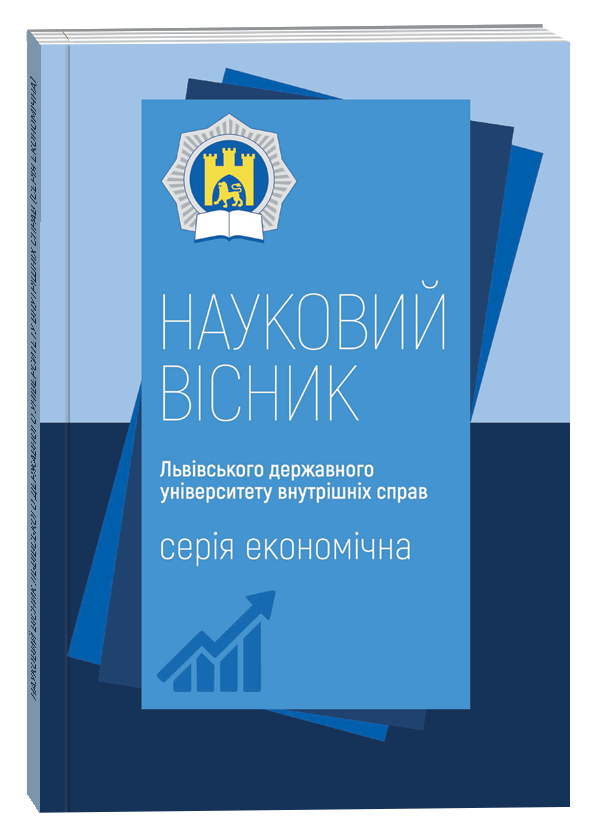IDENTIFYING AREAS OF TAX INCENTIVES BUSINESS DEVELOPMENT
Keywords:
fiscal stimulation of entrepreneurship, parameters of tax burden, efficiency of tax burden, regression analysis, macroeconomic indicators, functional division of taxesAbstract
Improved taxation system with active stimulation and regulation functions should be the main factor of motivational mechanism of the economic development. Theoretical generalization and new solution of scientific problem are relevant for the substantiation of theoretical foundations of economic processes’ regulation in Ukraine with the help of tax incentives for businesses. The continuing evasion process from automatic tax regulation system is common in Ukraine due to the constant interference of the legislative and executive authorities in shaping tax policy through constant changes in tax rates, expanding the number of tax incentives and their users, the administration regime change etc. Direct taxes on income can play the role of automatic control instruments as «built-in stabilizers» only after overcoming the mentioned above shortcomings. To analyze causal relationships in the tax area, such as the impact of the tax payments growth rate on the value added growth rate (income, GDP) with considering the time lag, the next indicator is used – elasticity coefficient of the tax base as one of the parameters to measure the effectiveness of fiscal burden on the economy. Elasticity coefficient shows the dependency measure between the result indicator (gross or net income, value added or profit) of the current period and the tax payments changes of the prior period. Considering the time lag allows you to discover the economic impact of tax payments. The coefficient measures the percentage of the result indicator change in the current period due to the tax payments change in the previous period by 1%. Analysis of the value added flexibility to the change in the determining factor, which is aggregate taxation on business and labor, made it possible to detect that state tax policy (which was held during the observation period) was one of the factors braking development of basic industries, innovation and investment processes in the economy. Methodological basis of the tax regulative directions’ selection of the economic processes stimulation of business was studied. This research was based on the model’s implementation into the tax burden regression analysis on functional features: taxes on consumption, taxes on capital and taxes on labor.
References
Інститут бюджету та соціально-економічних досліджень» (ІБСЕД) [Електронний ресурс]. – Режим доступу: http://ibser.org.ua/UserFiles/File/Budget-Monitor/KV_IV_2011_Monitoring_ukr.pdf
Лютий І. О. Податки на споживання в економіці України / І. О. Лютий, А. Б. Дрига, М. О. Петренко. – К.: Знання, 2005. – 335 с.
Скрипник А. В. Державне регулювання трансформаційної економі-ки (аспекти моделювання): монографія / А. В. Скрипник. – Ірпінь: Академія ДПС України, 2002. – 312 с.
Саніна І. С. Оцінка рівня податкового навантаження в Україні / І. С. Саніна [Електронний ресурс]. – Режим доступу: www.vestnik-econom. mgu.od.ua/journal/2015/13-2015/48.pdf
Цимбалюк І. О. Податкове навантаження як критерій ефективності ведення податкової політики / І. О. Цимбалюк, Н. В. Вишневська [Електрон-ний ресурс]. – Режим доступу: http://www.nbuv.gov.ua/old_jrn/Soc_Gum/Evu/2012_19_1/Tsymbaly.pdf
Фіскальна політика держави в умовах фінансової кризи / В. М. Мельник // Фінанси України. – 2008. – № 11. – С. 11–17.
Офіційний сайт Державної служби статистики [Електронний ре-сурс]. – Режим доступу: http://www.ukrstat.gov.ua/.
Офіційний сайт Міністерства фінансів України [Електронний ре-сурс]. – Режим доступу: http://www.minfin.gov.ua/control/uk/publish/archive/main?cat_id=77643.
Фінансовий портал МінФін [Електронний ресурс]. – Режим доступу: http://minfin.kmu.gov.ua/
Лук’яненко Д. Г. Економічна інтеграція і глобальні проблеми су-часності / Д. Г. Лук’яненко [Електронний ресурс]. – Режим доступу: http://readbookz.com/book/183/6470.html.





